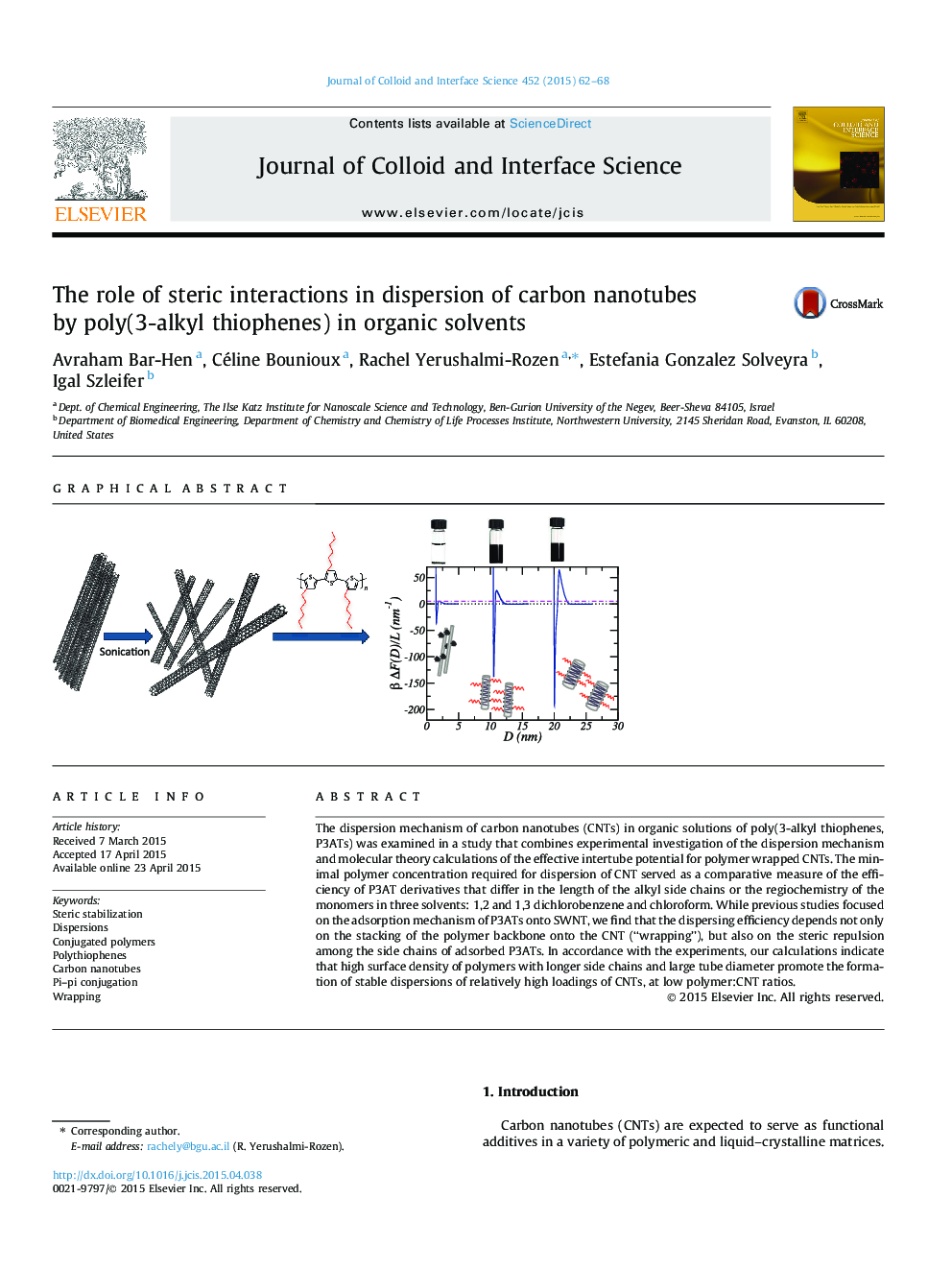| Article ID | Journal | Published Year | Pages | File Type |
|---|---|---|---|---|
| 606682 | Journal of Colloid and Interface Science | 2015 | 7 Pages |
The dispersion mechanism of carbon nanotubes (CNTs) in organic solutions of poly(3-alkyl thiophenes, P3ATs) was examined in a study that combines experimental investigation of the dispersion mechanism and molecular theory calculations of the effective intertube potential for polymer wrapped CNTs. The minimal polymer concentration required for dispersion of CNT served as a comparative measure of the efficiency of P3AT derivatives that differ in the length of the alkyl side chains or the regiochemistry of the monomers in three solvents: 1,2 and 1,3 dichlorobenzene and chloroform. While previous studies focused on the adsorption mechanism of P3ATs onto SWNT, we find that the dispersing efficiency depends not only on the stacking of the polymer backbone onto the CNT (“wrapping”), but also on the steric repulsion among the side chains of adsorbed P3ATs. In accordance with the experiments, our calculations indicate that high surface density of polymers with longer side chains and large tube diameter promote the formation of stable dispersions of relatively high loadings of CNTs, at low polymer:CNT ratios.
Graphical abstractFigure optionsDownload full-size imageDownload high-quality image (218 K)Download as PowerPoint slide
